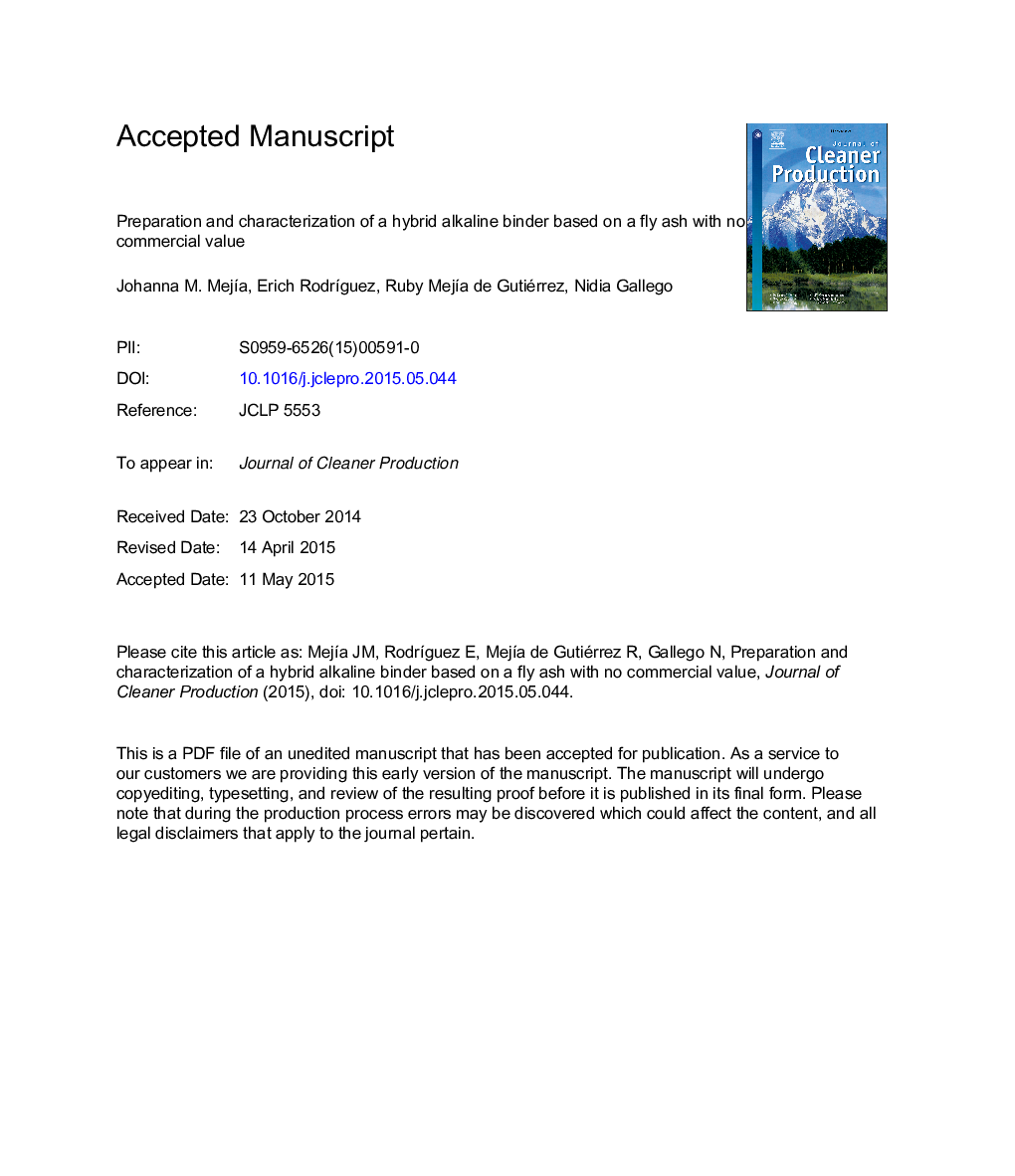| Article ID | Journal | Published Year | Pages | File Type |
|---|---|---|---|---|
| 8103420 | Journal of Cleaner Production | 2015 | 14 Pages |
Abstract
Alkali-activated Portland fly ash cement (FA/OPC) and alkali activated blast furnace slag-fly ash cement (FA/GBFS) were prepared using 70% of a low quality fly ash (FA). The low quality is associated with a high content of unburned material (loss of ignition of 14.6%). The hybrid cements were activated by the alkaline solution in order to obtain an overall SiO2/Al2O3 molar ratio of 5.0 and 6.0 and unique overall Na2O/SiO2 molar ratio of 0.21. The microstructural characterization of the blended pastes generated in the systems showed the coexistence of amorphous gels C-A-S-H and N-A-S-H gels in the hybrid systems. The addition of OPC or GBFS increases the compressive strength (at 28 days of curing) up to 127% compared with the geopolymer systems based only on FA used in this study. The content of silicates soluble also plays an important role in the reaction products and higher SiO2/Al2O3 lead to obtain higher mechanical performance and denser structure. The results obtained show that these hybrid cements are an effective way for valorization the waste used in this study for the production of high strength and low-carbon footprint cement-type material.
Related Topics
Physical Sciences and Engineering
Energy
Renewable Energy, Sustainability and the Environment
Authors
Johanna M. MejÃa, Erich RodrÃguez, Ruby MejÃa de Gutiérrez, Nidia Gallego,
